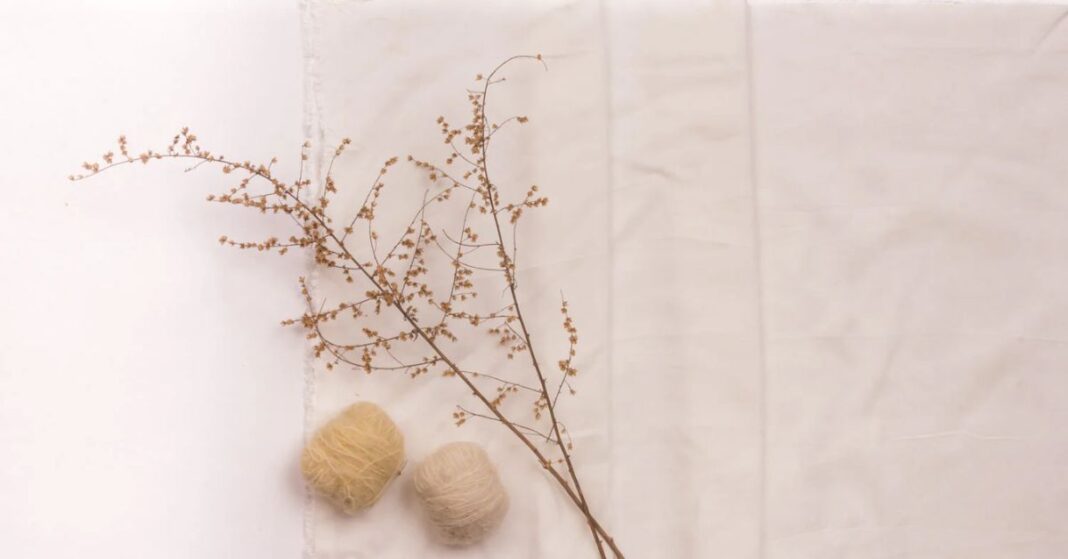What is soy fabric? A sustainable revolution in textiles, soy fabric is an innovative material made from soy protein fibers. This eco-friendly textile offers a silky texture, excellent breathability, and moisture-wicking properties. Moreover, it provides a sustainable alternative to synthetic and animal-based fabrics. Many designers and brands are now embracing soy fabric for its environmental benefits and luxurious feel.
With the rise of ethical fashion, soy fabric is becoming an essential material for eco-conscious consumers. Unlike traditional fabrics that rely on extensive resources, soy fabric utilizes byproducts from soybean production. This reduces waste and promotes a circular economy, making it one of the most responsible choices in modern textiles.
Table of contents
The Origins of Soy Fabric
What is soy fabric? A sustainable revolution in textiles began in the early 20th century when Henry Ford first experimented with soy-based fibers for automotive upholstery. His vision of using soy for industrial applications laid the foundation for future innovations. However, the technology to transform soy protein into a durable and flexible fabric was not fully developed until the late 20th century.
As sustainability became a priority in textile production, scientists discovered methods to convert soy protein into fibers suitable for clothing and home textiles. Today, soy fabric is widely used in fashion, bedding, and accessories, proving that sustainable innovation can lead to practical and stylish solutions.
How Is Soy Fabric Made?
What is soy fabric? A sustainable revolution in textiles starts with extracting soy protein from soybean hulls. This process involves several essential steps:
- Soybean Processing: After soybeans are harvested, their hulls are separated and processed to extract soy protein. This byproduct of soybean oil production ensures that no part of the soybean goes to waste.
- Protein Purification: The extracted soy protein is purified to remove any impurities, making it suitable for textile production.
- Fiber Formation: Through a wet spinning technique, the purified protein is transformed into long, soft fibers. This method enhances the fabric’s durability and flexibility.
- Weaving and Finishing: Once the fibers are created, they are spun into yarn and woven into fabric. Natural dyes and organic finishes are often applied to enhance the fabric’s sustainability.
Since soy fabrics primarily uses agricultural byproducts, it significantly reduces waste and supports sustainable farming practices. Additionally, it requires fewer chemicals and less water compared to traditional cotton production, making it a responsible choice for eco-conscious fashion brands.
Environmental Benefits of Soy Fabrics
What is soy fabrics? A sustainable revolution in textiles that prioritizes environmental responsibility. Unlike synthetic fabrics derived from petroleum-based resources, soy fabrics is biodegradable and requires fewer resources to produce. Here are some key environmental benefits:
- Biodegradability: Soy fabrics naturally decomposes, reducing landfill waste and environmental pollution.
- Renewable Resource: Soybeans are a fast-growing, renewable crop, making soy fabrics an eco-friendly alternative to synthetic textiles.
- Reduced Water Usage: Compared to cotton farming, soy fabrics production consumes less water and causes less strain on natural resources.
- Minimal Chemical Use: Unlike synthetic fibers that rely on harsh chemicals, soy fabrics processing involves fewer toxic substances.
- Carbon Footprint Reduction: The use of agricultural byproducts ensures that fewer resources are wasted, lowering the carbon footprint of soy fabrics production.
Because of these benefits, many sustainable fashion brands now prioritize soy fabrics for its minimal impact on the environment.
Key Properties of Soy Fabric
What is soy fabric? A sustainable revolution in textiles with outstanding properties that make it ideal for fashion and home textiles. Some of its most remarkable characteristics include:
- Softness: Soy fabric is often compared to silk due to its smooth, luxurious texture.
- Breathability: It allows air to circulate, making it perfect for warm-weather clothing.
- Moisture-Wicking: Soy fabric absorbs moisture efficiently, keeping the wearer cool and dry.
- Antibacterial Properties: It naturally resists bacteria and odors, making it ideal for activewear and undergarments.
- Durability: While not as strong as synthetic fibers, soy fabric maintains good longevity with proper care.
- Hypoallergenic Nature: It is gentle on sensitive skin and free from harsh chemicals.
Because of these exceptional qualities, soy fabric is now used in a variety of products, from high-end fashion to everyday clothing and bedding.
Comparing Soy Fabrics with Other Sustainable Fabrics
What is soy fabric? A sustainable revolution in textiles that competes with other eco-friendly materials. Let’s compare soy fabric with some of the most popular sustainable textiles:
- Soy Fabric vs. Organic Cotton: Soy fabric is softer, more breathable, and requires less water during production.
- Soy Fabric vs. Bamboo Fabric: While bamboo fabrics is sustainable, it often requires harsh chemicals for processing. Soy fabrics, on the other hand, uses fewer chemicals.
- Soy Fabric vs. Hemp Fabric: Hemp is highly durable but has a rougher texture compared to soy fabric’s silk-like feel.
- Soy Fabric vs. Wool and Silk: Unlike animal-derived fabrics, soy fabrics is 100% vegan and cruelty-free.
Given these comparisons, soy fabric stands out as a versatile and ethical choice for sustainable fashion.
Popular Uses of Soy Fabrics
What is soy fabrics? A sustainable revolution in textiles that is widely used across different industries. Some of its most common applications include:
- Casual Wear: T-shirts, dresses, and loungewear made from soy fabrics offer ultimate comfort.
- Activewear: The fabric’s moisture-wicking and antibacterial properties make it perfect for sportswear.
- Lingerie & Baby Clothing: Its soft texture and hypoallergenic properties are gentle on delicate skin.
- Luxury Fashion: Many high-end brands incorporate soy fabrics into scarves, blouses, and formal wear.
- Home Textiles: Soy-based bedding, pillowcases, and upholstery provide a sustainable option for eco-conscious consumers.
The Future of Soy Fabrics in Fashion
What is a soy fabrics? One has to live under a rock to have not heard about it. The current buzzword – soy fabrics is a relatively sustainable revolution in textile that is taking the fashion industry by storm. With the increase in demand for green alternatives, soy fabrics continues to grow in demand. There are expectations of improved technology with respect to textiles that will increase its durability as well as its affordability.
Most big name pre-stitched garment companies are investing in soy fibers lest their companies be labeled unsustainable. The entire industry is changing dramatically and systems of ethical treatment of soy outlined suggest it will rapidly revolutionize the sustainable fashion industry.
Conclusion: Soy Fabrics would radically change the future.
What is a soy fabrics? One has to live under a rock if they have not seen it. Soy fabrics is a revolutionary sustainable textile that boasts both comfort and stylish looks. This innovative material enables fibers to ethically replace more common textile fabrics while protecting the environment. With the shift in the landscape of the industry, we can predict an soy fabrics revolution and it is no surprise it’s brands’ and consumers’ new favorite. Read More: What Is NeoShell Fabric? The Future of Outdoor Wear
FAQs
Yes, soy fabrics is biodegradable and breaks down naturally, reducing environmental waste.
Yes, soy fabrics is hypoallergenic, soft, and gentle on sensitive skin.
Soy fabrics offers a sustainable alternative, but some synthetic textiles remain more durable.


